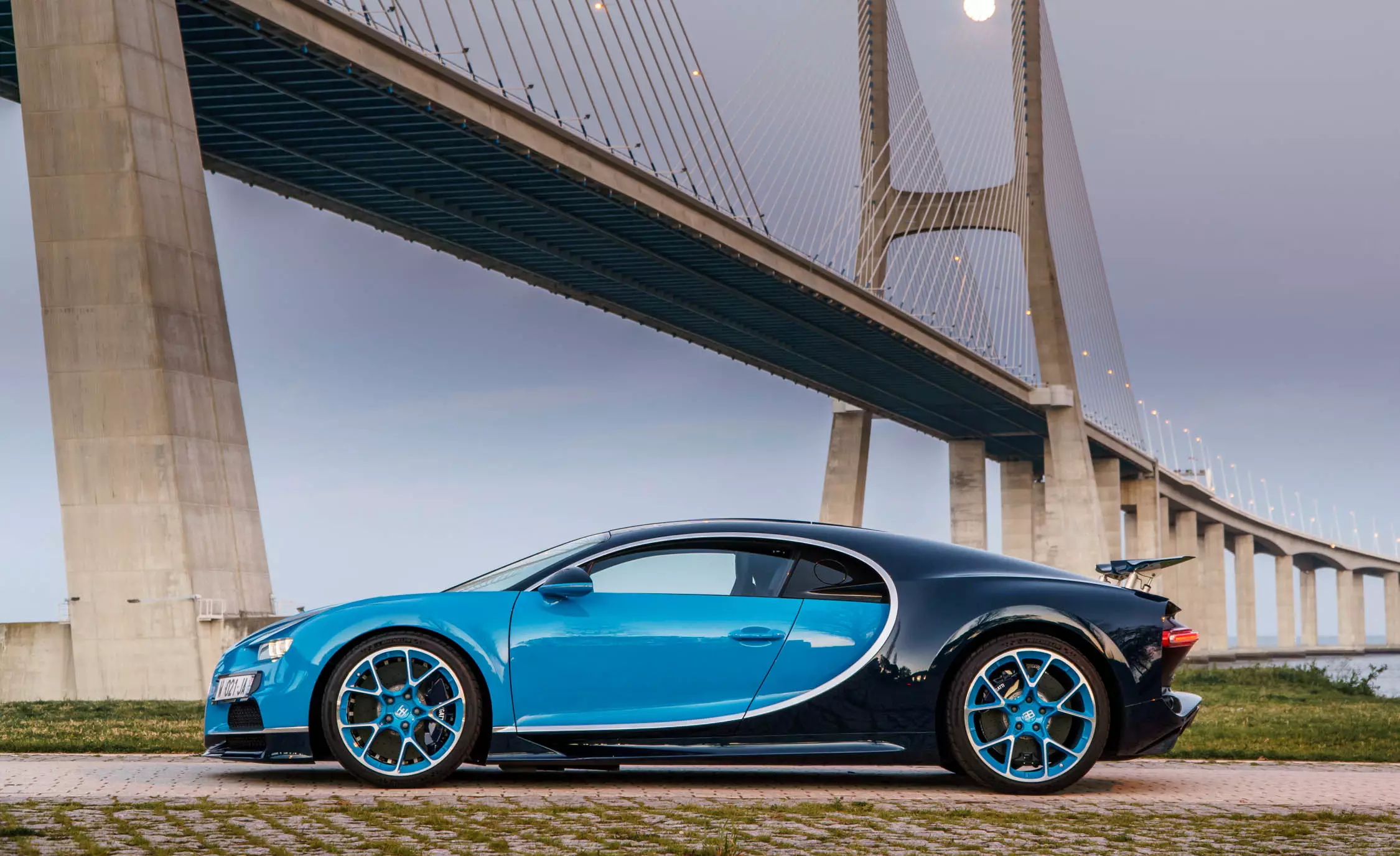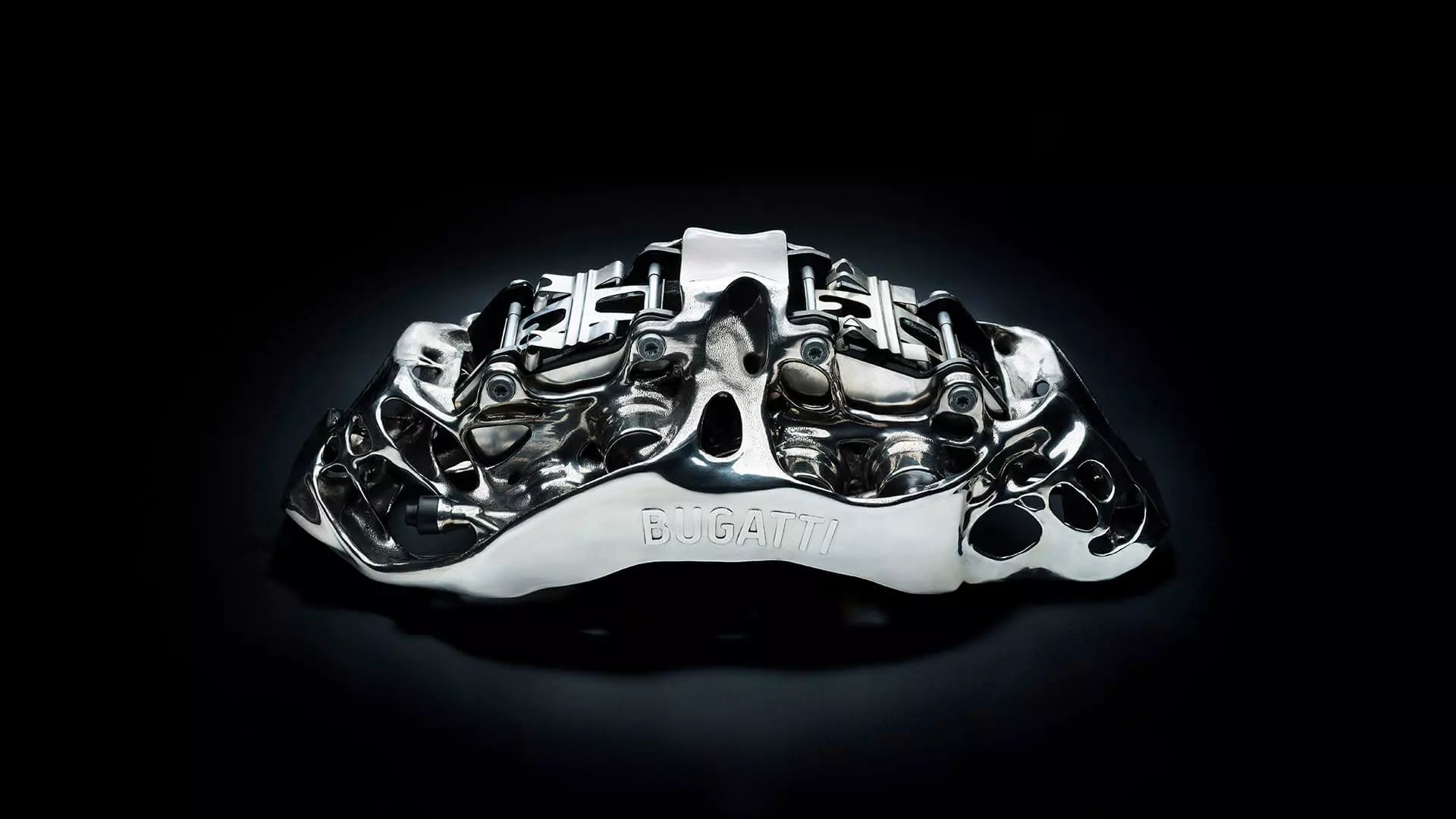THE bugatti chiron is a machine of superlatives — even though it was somehow wounded in its honor by a rival of Swedish origin… — and has just gained yet another superlative of weight, with the addition of new titanium brake calipers, which should be introduced in this model later in the year.
As you know, the Bugatti Chiron was already the “owner” of the biggest brake calipers in the automotive industry. These calipers were forged from a high-strength aluminum alloy block with eight titanium pistons at the front and six pistons at the rear. So far…
stronger and lighter
Bugatti has now taken another step forward, by developing titanium brake calipers — still the largest in the industry — which are now not only the largest functional component in titanium produced through 3D printing, as it is the first brake caliper to be produced by this method.

The new tweezers use as material a titanium alloy — Ti6AI4V from its name —, used mainly by the aerospace industry in components subject to enormous stress, offering a performance far superior to that of aluminum. The tensile strength is, of course, very high: 1250 N/mm2 , which means an applied force of just over 125 kg per square millimeter without this titanium alloy breaking.
The new brake caliper is 41 cm long, 21 cm wide and 13.6 cm high and, in addition to its superior strength, it has the great advantage of significantly reducing weight, affecting the ever-important unsprung masses. Weighs only 2.9 kg against 4.9 kg of the same aluminum part, which equates to a 40% reduction.

additive manufacturing
These new titanium brake calipers are the result of cooperation between the Bugatti Development Department and Laser Zentrum Nord. For the first time, titanium was used instead of aluminum to print vehicle components, which brought its challenges. The high strength of titanium has been the main reason why this material has not been used, which forced the resort to a high-performance printer.This special 3D printer, located on the Laser Zentrum Nord, which was the largest in the world capable of handling titanium at the beginning of the project, is equipped with four 400W lasers.
Each tweezer takes 45 hours to print.
During this process, titanium powder is deposited layer by layer, with the four lasers melting the powder into the predetermined shape. The material cools down almost immediately, and the clamp begins to take shape.
In total about 2213 layers are needed until the piece is complete.
After the last layer has been deposited, the excess material is removed from the printing chamber, cleaned and preserved for reuse. The brake caliper, now complete, remains in the chamber, supported by a support, which allows it to preserve its shape. Support that is removed after the component receives a heat treatment (which reaches 700 ºC) to stabilize it and guarantee the desired resistance.
The surface is finished through a combination of mechanical, physical and chemical processes, which also contribute to improving its fatigue strength. It takes more than 11 hours to optimize the contours of functional surfaces, such as piston contacts, using a five-axis machining center.
Bugatti, group leader in 3D printing
With this, Bugatti takes the lead in the Volkswagen Group not only in terms of 3D printing technology, but also in terms of high-tech applications. A kind of millionaire laboratory and very, very powerful...


